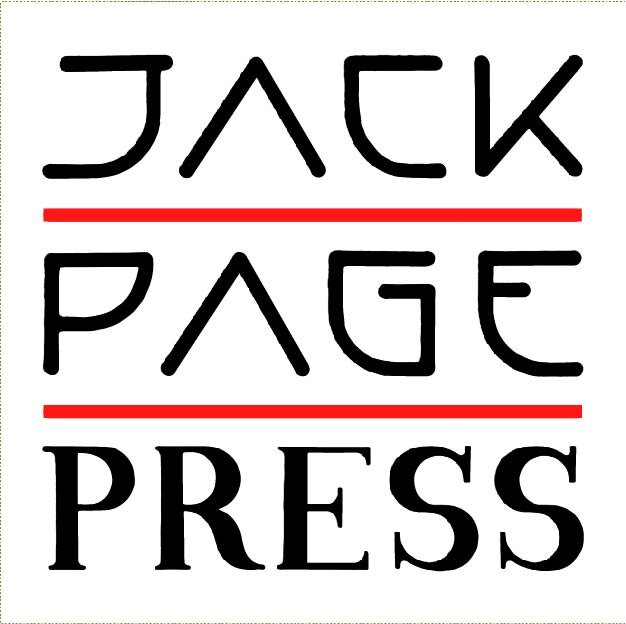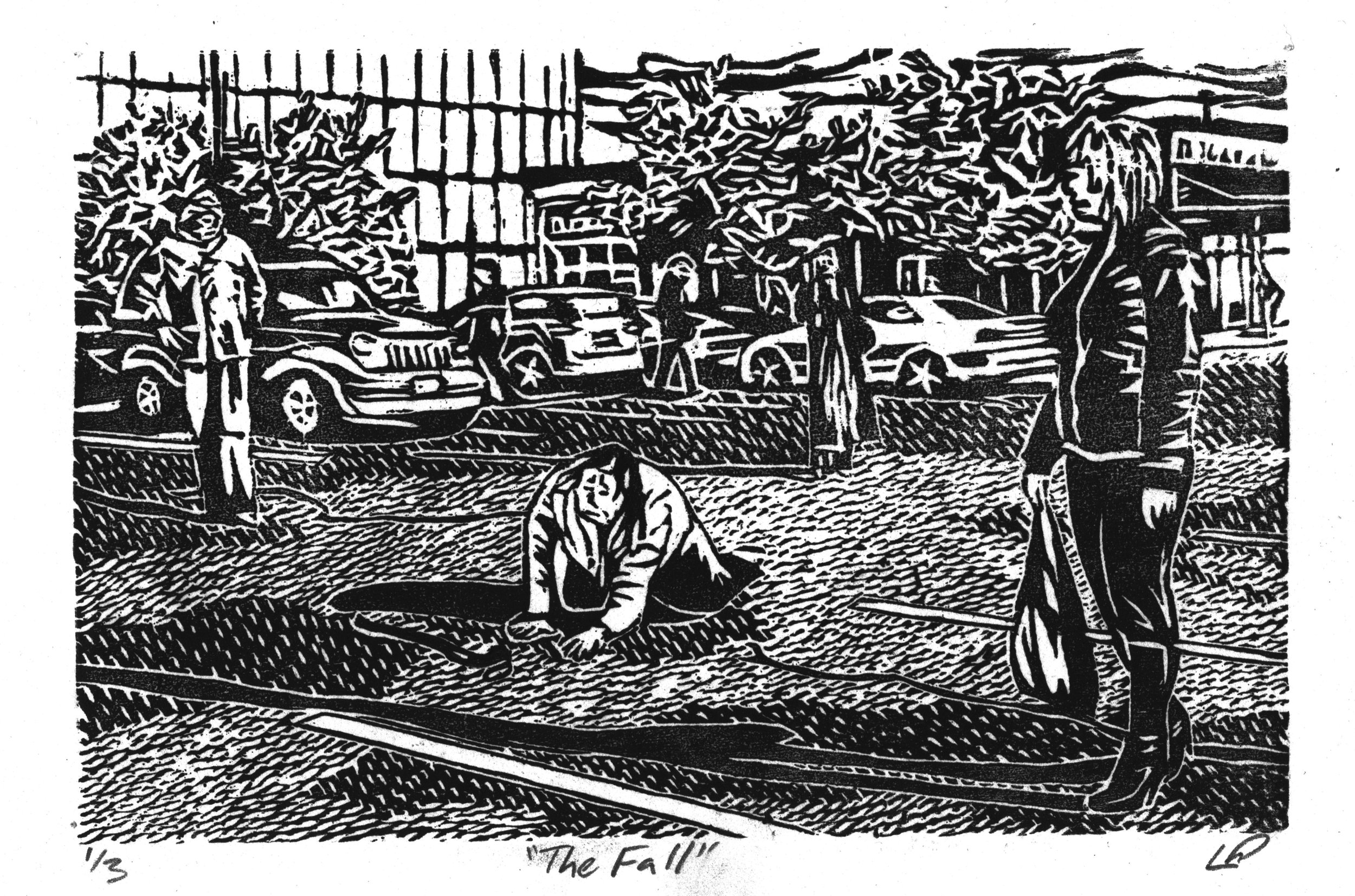
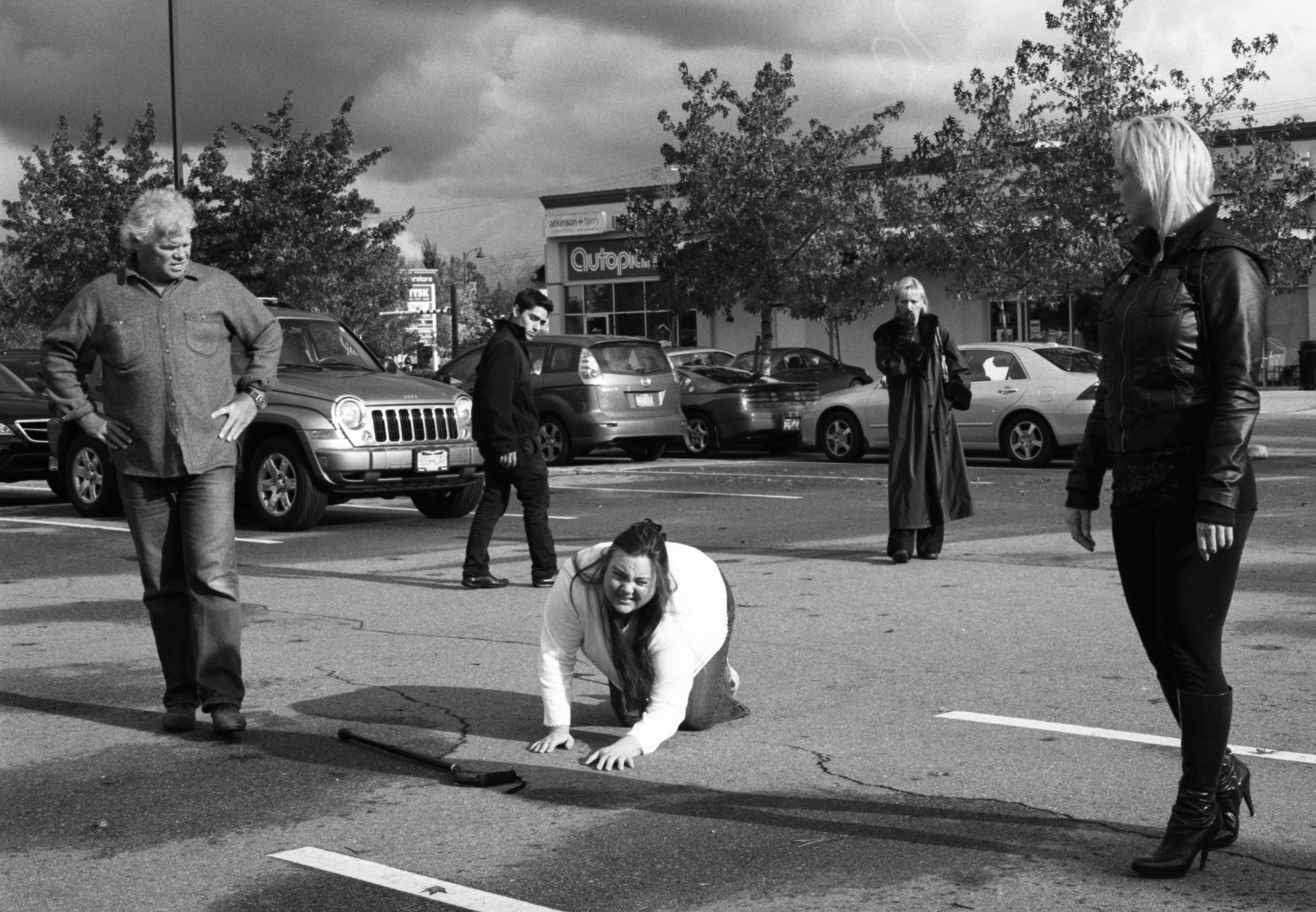
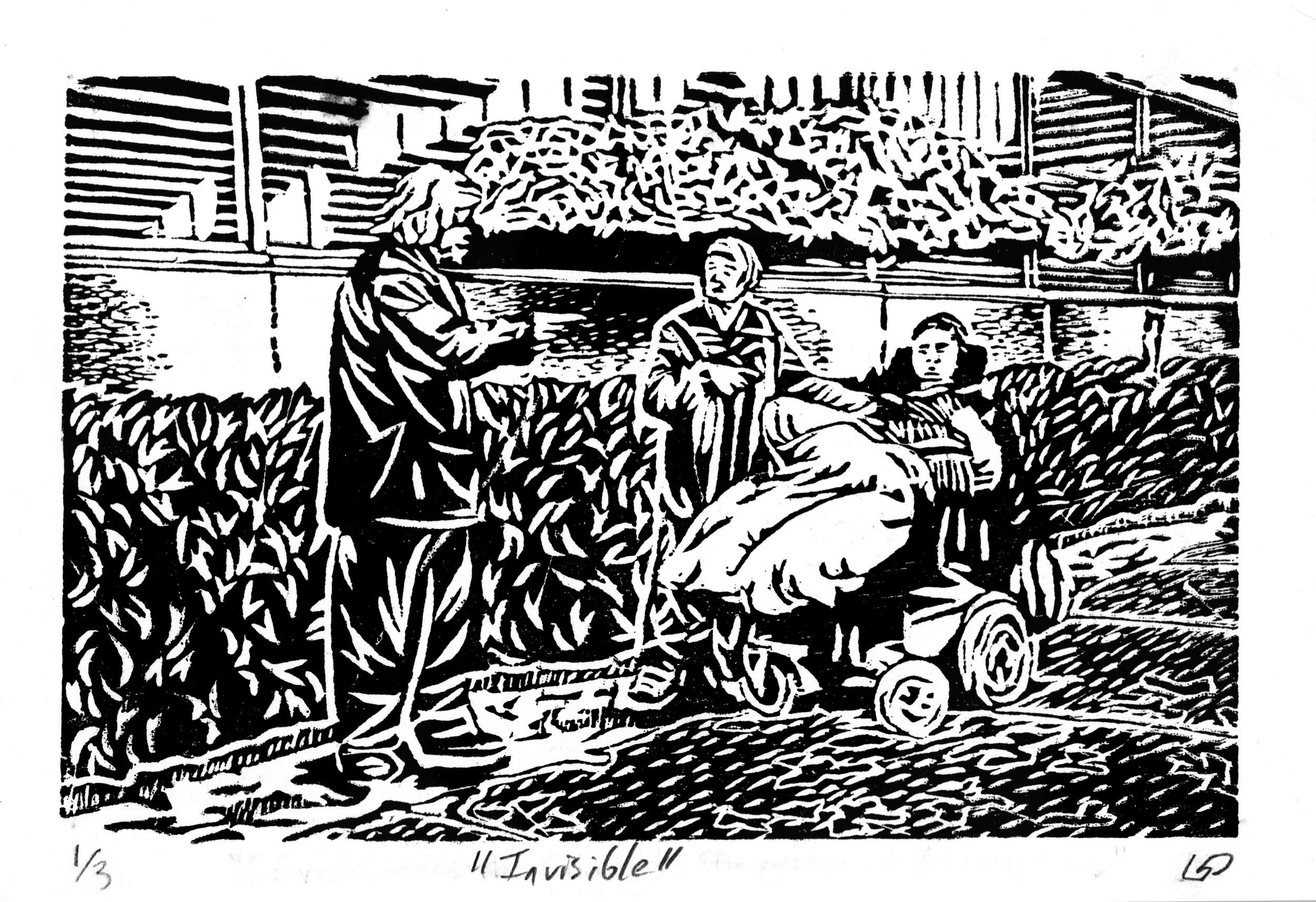

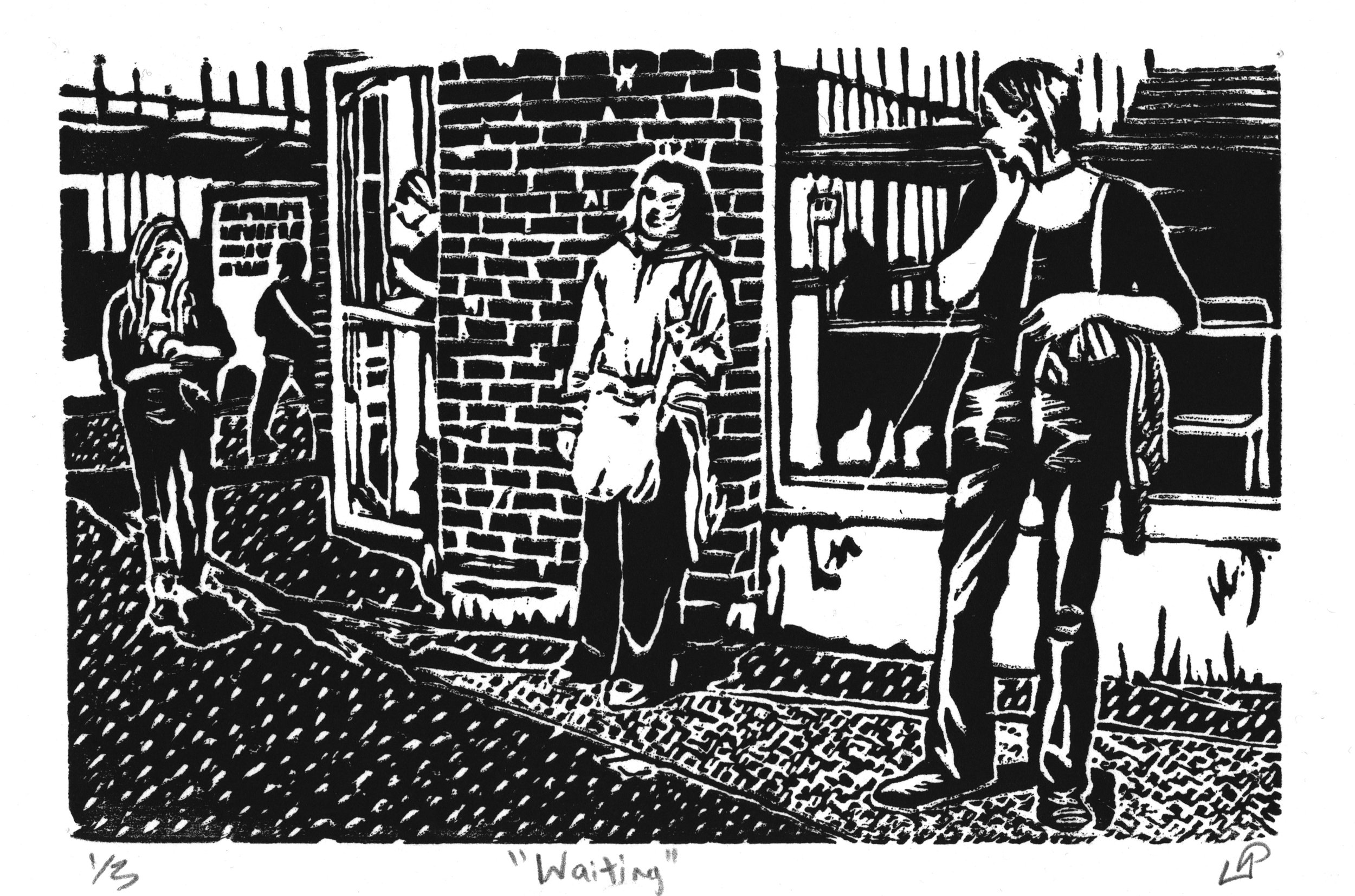
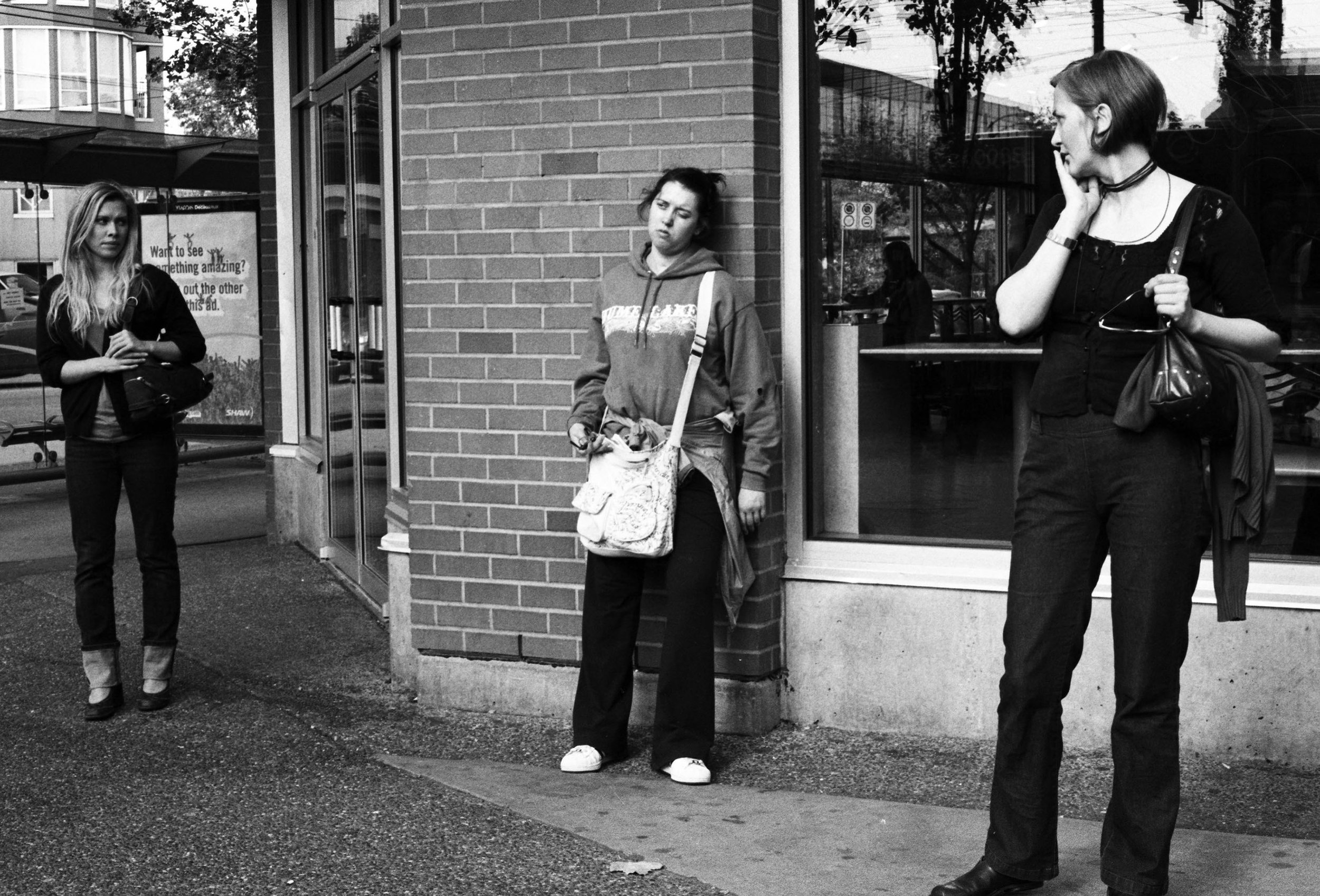
DISABILITY MEMORY (2011)
is a multimedia art series and collaborative community-based performance art project, including woodcuts presented in an accordion book, photographs, and text.
Motivated by my own experience of visible physical disability, I wanted to explore and confront cultural perceptions of people with disabilities (PWDs) by recreating their public experiences of ableism (discrimination based on impairment and disability). In 2011, I put up a Craigslist advertisement requesting people who identify as disabled to volunteer their personal stories of ableism experienced in public settings. Kristina St. Keverne, Kathleen Springer, and Angus Epp each volunteered their stories, their bodies, and their direction to re-enact these scenes as they experienced them.
Kristina, Katy, and Angus remembered being objectified, pitied, feared, ignored, freak-ified, and patronized by assuming able-bodied people on a regular basis on their way to school, work, shopping, etc. They all experienced the “able gaze”: able-bodied people staring at them while simultaneously ignoring their presence and assuming an inability to communicate and interact.
Public space is an arena of silent ableism, where people with visible disabilities encounter others who don't expect them to be out and about at all. Ironically, the very fact these scenes occurred in public spaces counters the misconception that all PWDs are shut-ins, isolated, institutionalized, or are incapable of participating in our communities. I believe Kristina's, Katy's, and Angus's stories speak to the experience of many PWDs. We struggle just to be accepted in public space, let alone navigate it freely.
Disabled people have a long and traumatic history of being denied access to public space. For instance, between 1881 and 1974, major United States cities like San Francisco, New Orleans, and Chicago had public ordinances aimed at PWDs, the poor, and homeless people. Commonly known as Ugly Laws*, many made it illegal for:
"Any person who is diseased, maimed, mutilated, or in any way deformed, so as to be an unsightly or disgusting object,
or an improper person to be allowed in or on the streets, highways, thoroughfares, or public places in the city, shall
not therein or thereon expose himself to public view, under the penalty of a fine of $1 for each offense."
(Chicago City Code 1881)**
But we have an equally long history of disability pride and resistance, of not putting up with legislation that seeks to do active harm to a scapegoated minority. I want to move disability from the realm of medicine, pathology, and physical difference towards that of a political and cultural minority. Just as in previous "Ugly Laws", physical disability is still most commonly constructed as the embodiment of corporeal insufficiency and deviance. Our disabled bodies become the sites upon which social anxieties about vulnerability, control, and identity are played out. When disabled people are stared at, harassed, and dehumanized in public, those ableist actions reinforce social power relations that construct disability as other and disabled people as second-class citizens.
Disabled people constantly confront the ridiculous but pervasive notion that we have no agency. By being in public, by participating in public life, by seeking and gaining employment and education, by telling each other about the barriers put in our way, we refuse to be second-class citizens.
I believe Kristina, Katy, and Angus helped disabled audiences to recognize themselves and their own experiences in these images. When we speak for ourselves and to each other, we have the power to control how we are represented in art and pop culture. When we experience ableism, we must confront and counter these silent assumptions by sharing our stories.
I hope this work inspires disabled and able-bodied people to recognize and combat ableism in their everyday lives.
Thanks so much to Kristina St. Keverne, Kathleen Springer, Angus Epp, and Cheryl Epp for volunteering their time, energy, and personal stories for this project.
*Albrecht, general ed. Gary L. (2006). Encyclopedia of disability. Thousand Oaks [u.a.]: SAGE Publ. pp. 1575–1576
**Schweik, Susan M. (2009). The ugly laws : disability in public ([Online-Ausg.]. ed.). New York: New York University Press. ISBN 9780814740576.
DISABILITY MEMORY was exhibited as a series of hand printed woodcuts in the BC Book Arts Guild's "Word Vancouver" Exhibition in September 2011 and 2018, at the Vancouver Public Library. This series of prints was presented in an accordion book, as a part of my multi-work art presentation, demonstration, and interactive zine and altered-book making workshop.
